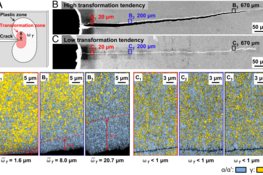
Advanced Materials
Advanced materials have shaped human progress for millennia — and their importance continues to grow. With demand in key sectors like energy, mobility, health, and infrastructure expected to double by 2050, we need both a deeper understanding of how materials work and entirely new materials that can perform under extreme conditions. Our research focuses on materials that tackle society’s most pressing challenges:
Energy: from hydrogen-ready alloys and batteries to solar cells and fuel cell components
Mobility: lightweight, strong materials for electric and hybrid vehicles
Infrastructure: durable, corrosion-resistant alloys for turbines, bridges, and chemical plants
Health: advanced alloys for implants and biomedical applications
Safety: high-toughness, cryogenic, and hydrogen-tolerant materials





















